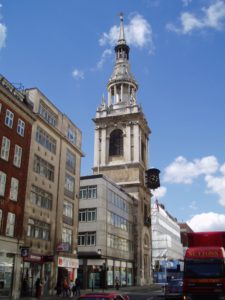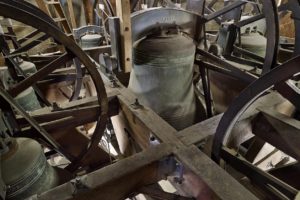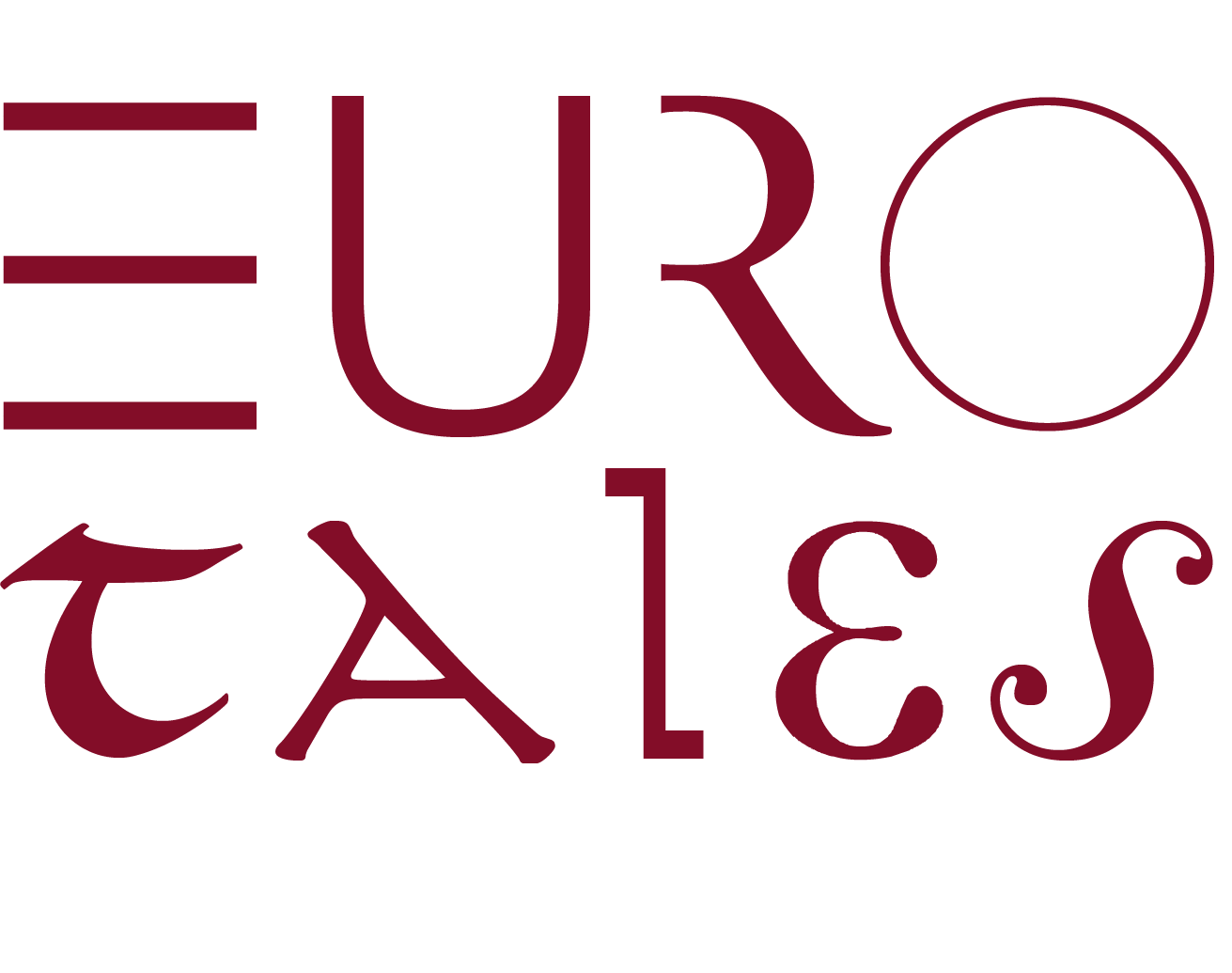Description


 Anyone born within the sound of Bow Bells is said to be a Cockney, and the characteristic English speech of the area is known as the Cockney dialect. There has been a church positioned here, in the centre of London, since Anglo-Saxon times, and the crypt dates from the Norman building of 1018. The bells were used to sound the curfew for London, for many years., and records that the bells of St Mary-le-Bow represent the call of London date from Medieval times (they are said to have called the 14th c. mayor Dick Whittington to London), and feature in stories, rhymes and verses. These bells are audible monuments reminding us of centuries of London’s voices. “During the Second World War the BBC’s World Service broadcast a recording of Bow bells ... as a symbol of hope to the people of Europe. This [1926] recording is still used as an interval signal” (Regan).On the road between London and Lewes (Sussex), the distance to London is measured from St Mary-le-Bow's church door, with mileposts along the way marked with the sign of a tied (ribbon) bow and four bells. This representation of the word 'bow' through an image related to a different thing (ribbon rather than arch or archery bow) can be taken as a sort of visual pun.
Anyone born within the sound of Bow Bells is said to be a Cockney, and the characteristic English speech of the area is known as the Cockney dialect. There has been a church positioned here, in the centre of London, since Anglo-Saxon times, and the crypt dates from the Norman building of 1018. The bells were used to sound the curfew for London, for many years., and records that the bells of St Mary-le-Bow represent the call of London date from Medieval times (they are said to have called the 14th c. mayor Dick Whittington to London), and feature in stories, rhymes and verses. These bells are audible monuments reminding us of centuries of London’s voices. “During the Second World War the BBC’s World Service broadcast a recording of Bow bells ... as a symbol of hope to the people of Europe. This [1926] recording is still used as an interval signal” (Regan).On the road between London and Lewes (Sussex), the distance to London is measured from St Mary-le-Bow's church door, with mileposts along the way marked with the sign of a tied (ribbon) bow and four bells. This representation of the word 'bow' through an image related to a different thing (ribbon rather than arch or archery bow) can be taken as a sort of visual pun.
The church was named after characteristically Romanesque arches of the Norman construction, which are rounded at the top, henced 'bowed', [from Old English boga "archery bow; anything bent or arched, an arch, a rainbow"]. It was also known as St Mary de Arcubus [from Latin arcubus "with bows"]. Most of the Norman church, and other, subsequent churches on this site, burned down, the latest such disaster occuring during World War II. The current building, which still has the Norman arched crypt, was constructed in 1956. The earliest written evidence tying the sound of Bow Bells to the word cockney is also the earliest unambiguous attestation of the word cockney being used for Londoners, and it is in Samuel Rowland’s 1600 satirical work The letting of humours blood in the head-vaine, which includes the statement “"I scorne ... To let a Bowe-bell Cockney put me downe." The characteristically London dialect changed over time, as all speech does, but many of its still-existing features, such as ‘h-dropping’ and sometimes pronouncing /v/ like [w], are very ancient. Cockney rhyming slang is found where, in London speech, a word is replaced by a phrase that rhymes with it (such as apples and pears for stairs) and then, often, contracted (e.g. butcher’s hook stands for look, but is used as butcher’s, as in “I took a butchers at it”). It was first associated with London speech and recognised in print in the 19thc. Changes and variations in Cockney speech will always have been affected by the large numbers of people coming to London from outlying regions. In the 19th century commentators were referring to new developing features of Cockney English as caused by ‘pollution’ from the dialects of Essex and Kent; but Dickens’s representation of the Cockney speech of Sam Weller and his father (in Sketches by Boz/Pickwick Papers, 1836) allowed the dialect to be recognized as an independent speech variety and, furthermore, associated it with a cheerful and practical attitude to life, giving “character” to the dialect itself. This appears to have been the first significant representation in literature of Modern Cockney, and the first time in which a low-prestige way of speaking was made popular among readers of all backgrounds. In the present day the word is used for any working-class London accent that deviates from R.P.
Storage
The bells are in the spire of the church of St Mary le Bow, which was rebuilt by Sir Christopher Wren in 1683 following the Great Fire of London in 1666. The ring of 12 bells were made in 1956, to replace the bells that had been lost in an air-raid in 1941.
Bibliography
Anon., “Born within the sound of Bow Bells”, «www.phrases.org», Acccessed 21 April 2022, https://www.phrases.org.uk/meanings/72100.html
Brian Mott, “Traditional Cockney and Modern London Speech”, «Dialectologia 9», 2012, 69-94
Daniel Smith, The Language of London. Cockney Rhyming Slang, London, Michael O’Mara Books, 2011
I. Williams, “The Personal Names in the Early Anglesey Inscriptions”, «R. Bromwich (ed.) The Beginnings of Welsh Poetry. Studies by Sir Ifor Williams», Cardiff, 1980, 16-24
Mark Regan, Bow Bells, A brief History, «Stmarylebow.org.uk/bells/», Accessed 1 May 2022, Stmarylebow.org.uk/bells/
Links
Card author: Margaret J-M Sonmez
Bow Bells
Trace type: other
Dating: 1000-1200
Year: 1080 to Present
Language: English

